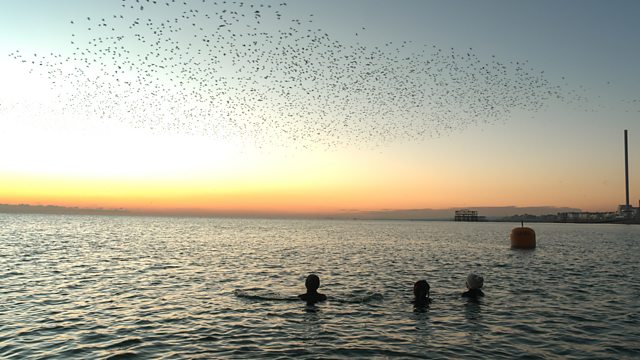Winterwatch: Your Guide To The Best Winter Birdwatching

Table of Contents
Choosing the Right Location for Winter Birdwatching
Successful winter birdwatching starts with choosing the right location. Knowing where to look is half the battle, especially during the colder months when bird activity can be more concentrated.
Identifying Local Wintering Birds
Before heading out, research which bird species are common in your area during winter. This vital step will significantly improve your chances of spotting interesting birds.
- Check local Audubon Society websites for species checklists: The Audubon Society maintains comprehensive databases of bird sightings across North America. Their website is an excellent resource for finding out what birds to expect in your region during winter.
- Utilize birdwatching apps like Merlin Bird ID or eBird: These apps use your location and descriptions to help identify birds you've spotted, aiding in your bird identification skills and adding to citizen science databases.
- Visit state or national park websites for information on winter bird populations: Many parks actively monitor bird populations and provide information on where to find specific species. These are great resources for planning your winter birdwatching excursions.
Selecting Ideal Habitats
Different birds prefer different habitats. Understanding this will make your winter birdwatching adventures much more productive.
- Water Sources: Frozen lakes and ponds, even partially frozen ones, attract waterfowl like ducks, geese, and various wading birds. Look for areas with open water or areas where the ice is thin.
- Feeding Stations: Setting up bird feeders in your backyard is a fantastic way to attract a variety of species. Consider offering different types of seeds (sunflower, niger, etc.), suet, and fruit to cater to a broader range of birds. Tube feeders, hopper feeders, and suet feeders all attract different species.
- Forests and Woodlands: During winter, many birds rely on berries and seeds found in forests and woodlands. Look for trees with berries like holly or crabapple.
- Coastal Areas: Coastal areas offer excellent opportunities to observe migratory seabirds and waterfowl. Look for areas with rocky shorelines, mudflats, or beaches.
Essential Gear for a Successful Winter Birdwatching Trip
Proper equipment is crucial for a comfortable and successful winter birdwatching experience. Here's what you'll need:
Binoculars and Scopes
High-quality optics are essential for clear observation, particularly in the often-challenging conditions of winter birdwatching.
- Binocular Recommendations: Consider binoculars with 8x42 or 10x42 magnification. Brands like Nikon, Vortex, and Bushnell offer excellent options across various price points. A larger objective lens (the second number) allows for better light gathering in low-light winter conditions.
- Spotting Scopes: For observing distant birds, a spotting scope offers significantly higher magnification and clearer views. These are especially helpful for observing waterfowl on lakes or birds in high tree canopies.
Warm Clothing and Weather Protection
Winter birdwatching requires appropriate attire to combat the cold and inclement weather.
- Layering is Key: Dress in layers to adjust to changing temperatures. Base layers should wick away moisture, mid-layers provide insulation, and outer layers offer wind and waterproof protection.
- Waterproof and Windproof Outerwear: A good quality jacket and pants are essential for staying dry and warm.
- Hats, Gloves, and Scarves: Don't forget the accessories! These will help keep your extremities warm and comfortable.
Field Guide and Notebook
Recording your sightings and learning more about the birds you see enhances your winter birdwatching experience.
- Regional Field Guides: Choose a field guide specific to your region to aid in identification. The Sibley Guide and National Geographic Field Guide are popular choices.
- Birdwatching Journal: Keep a notebook to record your sightings, including the date, location, species, and any interesting observations about behavior or plumage. This creates a valuable record of your winter birdwatching adventures.
Tips and Techniques for Winter Birdwatching
Mastering certain techniques will dramatically increase your chances of successful winter birdwatching.
Patience and Observation
Winter birdwatching requires patience. Birds may be less active in colder temperatures, so take your time and observe carefully.
- Best Observation Times: Early morning and late afternoon often provide the best light and bird activity.
- Quiet Movements: Avoid sudden movements that might scare birds away. Move slowly and quietly.
Understanding Bird Behavior
Learning about winter bird behaviors will greatly enhance your winter birdwatching skills.
- Winter Behaviors: Birds may flock together for warmth and protection, or forage more intensely for food. Understanding these behaviors can help you locate birds.
- Foraging Techniques: Observe how birds find and consume food – this can be a great way to identify them.
Photography and Ethical Considerations
Capturing stunning photos is a rewarding aspect of winter birdwatching, but it's crucial to do so ethically.
- Maintain a Safe Distance: Avoid getting too close to birds, which can disturb their natural behavior and stress them.
- Minimize Disruption: Use a telephoto lens or spotting scope to avoid approaching birds.
Conclusion
Winter birdwatching offers a unique and rewarding experience for nature lovers. By following these tips and techniques, choosing the right equipment and locations, you can greatly enhance your winter birdwatching adventures. Remember to research local species, pack appropriately, and embrace the patience needed for observing these beautiful creatures in their winter habitat. So grab your binoculars and embark on your own winter birdwatching journey! Don't forget to share your sightings and experiences – happy winter birdwatching!

Featured Posts
-
 Kino Na Sluzhbe Otechestvu Vzglyad Na Luchshie Filmy Festivalya
May 13, 2025
Kino Na Sluzhbe Otechestvu Vzglyad Na Luchshie Filmy Festivalya
May 13, 2025 -
 Doom The Dark Ages Release Dates And Launch Times
May 13, 2025
Doom The Dark Ages Release Dates And Launch Times
May 13, 2025 -
 La And Orange County Face Record Breaking Heat Safety Tips And Precautions
May 13, 2025
La And Orange County Face Record Breaking Heat Safety Tips And Precautions
May 13, 2025 -
 Golden Horse Awards Winner Lin Tsan Ting A Cinematographers Legacy At 94
May 13, 2025
Golden Horse Awards Winner Lin Tsan Ting A Cinematographers Legacy At 94
May 13, 2025 -
 Investigation Launched Into Plano Islamic Center Development By Texas Rangers At Gov Abbotts Behest
May 13, 2025
Investigation Launched Into Plano Islamic Center Development By Texas Rangers At Gov Abbotts Behest
May 13, 2025
